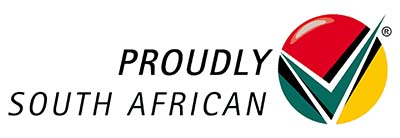Are you a business owner wondering how to keep track of your company’s assets more effectively & efficiently?
You’re not alone! Physical Asset Audit Verification might just be the key you’ve been looking for.
In simple terms, it’s a way to ensure that what you own matches what you think you own. Let’s dive into the basics of this process.
What Is Physical Asset Audit Verification?
Imagine putting name tags on all your valuable belongings so you can easily spot them in a crowd.
That’s essentially what asset identification and tagging does for a business.
It’s about giving each asset a unique identity and then verifying its existence and condition periodically.
This could be anything from machinery and equipment to office furniture and computers even biological assets, consumables and inventory items i.e. Raw material and Full processed goods.
The Key Steps Involved
- Asset Identification and Tagging: This is the foundation. Each asset gets labeled with a unique identifier, which could be a barcode, QR code, or RFID tag.
- Verification Process Overview: Periodically, a team physically checks these assets against records to confirm they’re where they’re supposed to be and in working order.
- Documentation and Record-Keeping: All findings are documented meticulously for future reference and analysis.
Why Does It Matter?
Picture this: You think your company has 50 computers, but in reality, you only have 40. Even thinking that all assets are in a good working condition only to find redundant and obsolete items in circulation.
But why is verification so important? Here are some reasons why it’s like kryptonite to financial gremlins:
- Accuracy Champion: Say goodbye to phantom assets messing with your balance sheet. Verifications ensure your asset records are squeaky clean, giving you financial peace of mind and making those investors do a happy dance.
- Asset Whisperer: You’ll become the ultimate guru of your stuff. No more wondering where that old printer got wanderlust or if that delivery truck is on its last wheels. Verifications give you intimate knowledge of your assets, helping you manage them like a pro.
- Fraud Fighter: Those sneaky gremlins trying to pilfer your assets? Verifications are your early warning system. Discrepancies between counts and records? Bam! Red flag. We’ll uncover any fishy business and keep your assets safe from harm.
- Compliance King: Dodging those pesky regulations is no joke. Verifications show you’re playing by the accounting standards as well as defined internal company policies, keeping the suits happy and your business humming with compliance.
Steps To Perform A Physical Asset Audit
- Planning and Preparation: Decide what assets need verification, set a schedule, and assemble the team.
- Conducting the Audit: Physically verify each asset, checking its condition and location against records.
- Analysis and Reporting: Review findings, identify discrepancies, and create reports for further action.
In South Africa: Why It’s Crucial
In South Africa, adherence to regulations is vital. An asset audit helps meet both internal and external audit compliance standards, curbing fraud and theft risks.
Moreover, it adds transparency to financial records, which is crucial for stakeholders and business credibility.
Conclusion
Physical Asset Audit Verification isn’t just about counting what you own.
It’s about ensuring your business runs smoothly, your finances are accurate, and your stakeholders trust you.
Embrace this process, especially in South Africa’s dynamic business landscape, and watch your operations become more efficient and reliable.
Give your assets the attention they deserve, and they’ll take care of your business growth in return!





